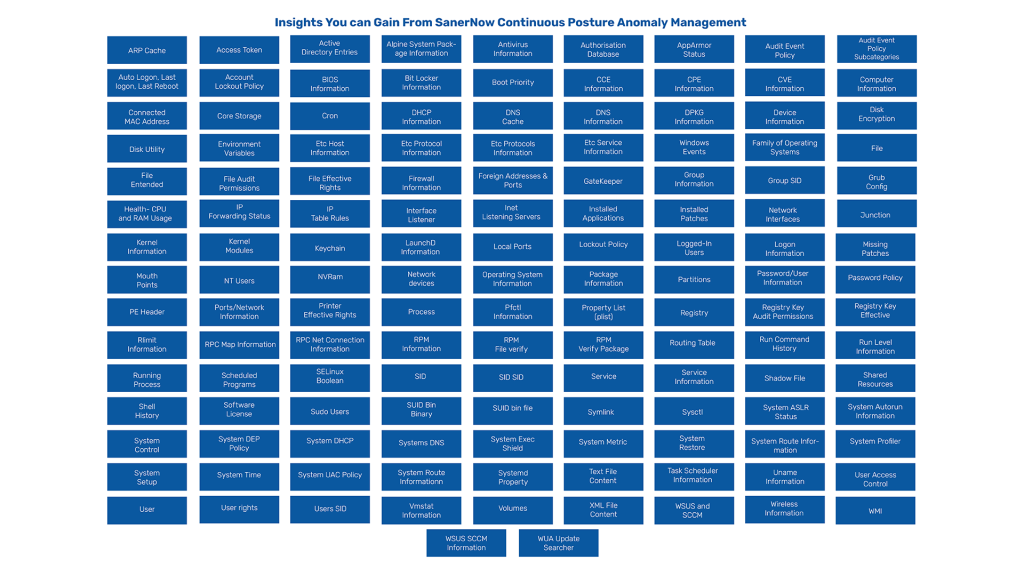
- ARP Cache
- Auto Logon, Last Logon, Last Reboot
- Connected MAC Addresses
- Disk Utility
- File Extended
- Health – CPU and RAM Usage
- Kernal Information
- Mouth Points
- PE header
- Rlimit Information
- Running Process
- Shell History
- System Control
- System Setup
- User
- Access Token
- Account Lockout Policy
- Core Storage
- Environment Variables
- File Audit Permissions
- IP Forwarding Status
- Kernal Modules
- NT Users
- Ports/Network Information
- RPC Map Information
- Scheduled Programs
- Software License
- System DEP Policy
- System Time
- User rights
- Active Directory Entries
- BIOS Information
- Cron
- Etc Host Information
- File Effective Rights
- IP Table Rules
- Keychain
- NVRam
- Printer Effective Rights
- RPC Net connection Information
- SELinux Boolean
- Sudo Users
- System DHCP
- System UAC Policy
- Users SID
- Alpine System Package Information
- BitLocker Information
- DHCP Information
- Etc Protocol Information
- Firewall Information
- Interface Listener
- LaunchD Information
- Network devices
- Process
- RPM Information
- SID
- SUID Bin Binary
- System’s DNS
- System root information
- Vmstat Information
- WSUS SCCM Information
- Antivirus Information
- Boot Priority
- DNS Cache
- Etc protocol’s information
- Foreign Addresses & Ports
- Inet Listening Severs
- Local Ports
- Operating System Information
- Pfctl Information
- RPM File Verify
- SID SID
- SUID bin file
- System Exec Shield
- Systemd property
- Volumes
- Authorisation Database
- CCE Information
- DNS Information
- Etc Service Information
- GateKeeper
- Install Applications
- Lockout Policy
- Package Information
- Property List (plist)
- RPM Verify Package
- Service
- Symlink
- System Metric
- Text File Content
- XML File Content
- WUA Update Searcher
- AppArmor Status
- CPE Information
- DPKG Information
- Windows Events
- Group Information
- Installed Patches
- Logged-In Users
- Partitions
- Registry
- Routing Table
- Service Information
- SYSCTL
- System restore
- Task Scheduler Information
- WSUS and SCCM
- Audit Event Policy’
- CVE Information
- Device Information
- Family of Operating Systems
- Group SID
- Network interface
- Logon Information
- Password/User Information
- Registry Key Audit Permissions
- Run Command History
- Shadow File
- System ASLR Status
- System Route Information
- Uname Information
- Wireless Information
- Audit Event Policy Subcategories
- Computer Information
- Disk Encryption
- File
- Grub Config
- Junction
- Missing Patches
- Password Policy
- Registry Key Effective
- Run Level Information
- Share Resources
- System Autorun Information
- System Profiler
- WMI


